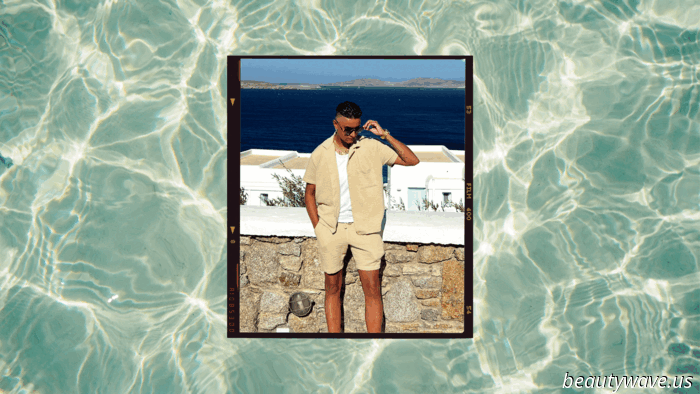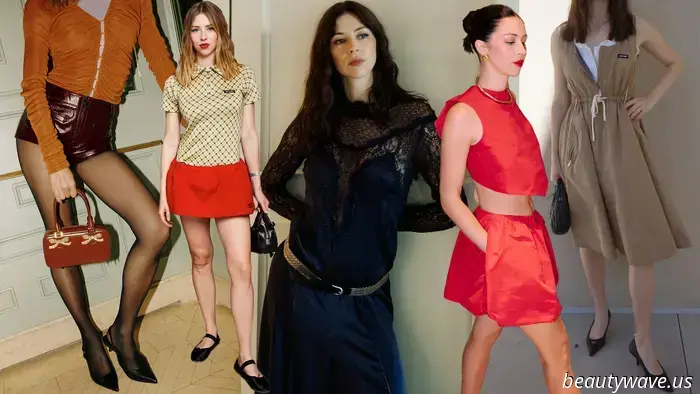
What Do Women *Really* Want to Wear? These Danish Designers Know the Answer.
Scandinavia has long been revered for its design, known for its clean lines, thoughtful craftsmanship, and enduring aesthetic—qualities that have solidified its status in the realm of interior design and more. Recently, however, a significant shift has emerged, altering not only the curation of spaces but also the way people dress, with women taking the lead. This transformation is especially prominent in Denmark's fashion scene, where female designers are reinterpreting design from a women's viewpoint, garnering global attention for their work. At CIFF, the Copenhagen International Fashion Fair, the atmosphere is vibrant. It is here that the world experiences the fresh and nuanced feminine perspective of Danish design—a viewpoint that values versatility, authenticity, and a fluid expression of femininity. In contrast to the global luxury fashion sector, predominantly led by male creative directors, the Scandinavian fashion industry is largely influenced by women—a fact that is clearly felt. The pieces are not merely apparel; they embody statements of identity and liberation, crafted with an acute awareness of how women actually live and interact with the world.
As I navigated CIFF this season, I experienced this evolution firsthand—the feminine perspective is not just impacting Danish fashion but is also revolutionizing the industry from within. From mother-daughter partnerships to female creative directors rejuvenating brands originally founded by men, these designers are changing how women dress in Scandinavia. It's worth paying attention to.
Since founding Gestuz in 2008, Sanne Sehested has aimed for a clear purpose in her designs: to create garments that empower women rather than diminish them. “I wanted to develop designs that highlight women's strength rather than suppress it,” she remarks. Drawing inspiration from a wardrobe rich in vintage items and a keen sense of balancing masculine and feminine elements, Sehested has crafted a brand that embodies the intricate complexity of real women's lives. “My Gestuz muse does not conform to one category, size, or age. She is a blend of contrasts and wishes her wardrobe to reflect that,” she clarifies.
Every collection, whether it's a structured leather suit or a soft, flowing dress, is shaped by her all-female team and their personal experiences, grounded in the belief that femininity is fluid and self-defined. “You can embody a powerful businesswoman in a draped dress or be a nurturing mother in a leather suit with substantial shoulder pads,” Sanne adds. Through Gestuz, she presents a distinctly Danish interpretation of womanhood—embracing experimentation, duality, and the freedom of self-expression.
The concept of "designing from the female perspective" encompasses various interpretations. How do you perceive this idea, and in what way is it mirrored in your collection development? My aim is to delve into the contrasts between femininity and masculinity within our collections. It's about creating pieces that resonate with my team and me, combining sharp suits and heavy denim with edgy leather, while also showcasing softer, more fluid attributes that are often overlooked but create a more engaging journey when intertwined.
Is there a specific moment or anecdote that has influenced your understanding of what women truly desire to wear? Observing the fashion journeys of the diverse women on my team has become one of my main resources. We have women who range from traditional feminine styles to playful party attire and even those who dress in an androgynous manner. Observing what they wear, how they style our pieces, the challenges they face with seasonal wardrobes, and what they instinctively choose when they wish to feel good—this is where the true magic occurs.
As for your S/S 26 collection, what themes or visions are you exploring and how do they resonate with the modern woman you are designing for? The spring/summer 2026 collection delves into themes of tension and duality, movement and stillness. Draped silhouettes reflect the curves of speed, while flowing dresses evoke imagery of cars navigating turns. The collection contrasts femininity and masculinity, stillness and motion, occasion wear and everyday attire.
Drawing subtle inspiration from vintage racing culture, the collection incorporates elements of utility wear: worn leather, matching suits, heavy denim, and cropped bomber jackets reminiscent of classic workwear silhouettes and vintage mechanic attire. Imagery from the 1970s and '80s Formula One and Le Mans has filled our mood boards, especially inspired by Marie-Claude Charmasson, a glamorous French journalist and race car driver known for her striking blonde hair, often seen wearing a white boiler suit and a baby-blue helmet, with vivid red accents that greatly influenced our palette.
Has your understanding of femininity changed since you launched your brand? How does this transformation appear in your silhouettes, materials, or styling? Ultimately, femininity is defined by individual choice. In this collection, one might point to a long pink dress as our feminine interpretation, yet we aimed to illustrate that power can take many forms—whether through a suit with broad shoulders or softer, quieter pieces. Incorporating that gentleness into our fast-paced lives makes















Other articles
 Everyone is after The Row It Shoes—I'm saving $1,300 by purchasing the Ugg version instead.
Clear a path for autumn flats.
Everyone is after The Row It Shoes—I'm saving $1,300 by purchasing the Ugg version instead.
Clear a path for autumn flats.
 Modes of Expression: The Ways in Which the Queer Community in Caribbean Culture Utilizes Hair to Narrate Their Experiences
Three individuals share their distinct experiences.
Modes of Expression: The Ways in Which the Queer Community in Caribbean Culture Utilizes Hair to Narrate Their Experiences
Three individuals share their distinct experiences.
 SM-Clinic and an anxiety-free check-up: the philosophy of the body inspired by da Vinci
SM-Clinic and an anxiety-free check-up: the philosophy of the body inspired by da Vinci
On July 30, the greenhouse-restaurant PARK became a place where the boundaries between science, art and personal well-being blurred. That day, self-care took on a new tone — deeply, intellectually, and exquisitely. The immersive event "Energy of Youth. The Code of Health", organized by SM-Clinic in collaboration with the TV channel LisChannel, turned the medical agenda into a cultural gesture. The inspiration was Leonardo da Vinci — a figure in whom they converged…
 Every Stylish Outfit Worn by Hermione Corfield to Promote the Outlander Prequel
During the press tour for Outlander: Blood of My Blood, British actress Hermione Corfield was dressed by Cher Coulter in outfits from designers like Coach, Miu Miu, and Shushu/Tong.
Every Stylish Outfit Worn by Hermione Corfield to Promote the Outlander Prequel
During the press tour for Outlander: Blood of My Blood, British actress Hermione Corfield was dressed by Cher Coulter in outfits from designers like Coach, Miu Miu, and Shushu/Tong.
 Bella Hadid Recently Wore the Sophisticated Heel Trend That French Women Prefer to Sandals.
Bella Hadid sported a trendy shoe style that French women are opting for over sandals. Check out how she styled this trend and find options to shop here.
Bella Hadid Recently Wore the Sophisticated Heel Trend That French Women Prefer to Sandals.
Bella Hadid sported a trendy shoe style that French women are opting for over sandals. Check out how she styled this trend and find options to shop here.
 I'm currently in my Lazy Girl Era—this makeup routine takes under 10 minutes and consistently gets me compliments.
Additionally, it requires only 7 products.
I'm currently in my Lazy Girl Era—this makeup routine takes under 10 minutes and consistently gets me compliments.
Additionally, it requires only 7 products.
What Do Women *Really* Want to Wear? These Danish Designers Know the Answer.
Explore three female Danish designers featured at CIFF who are transforming women's fashion with a new, genuine viewpoint and shifting the landscape of Scandi style.
